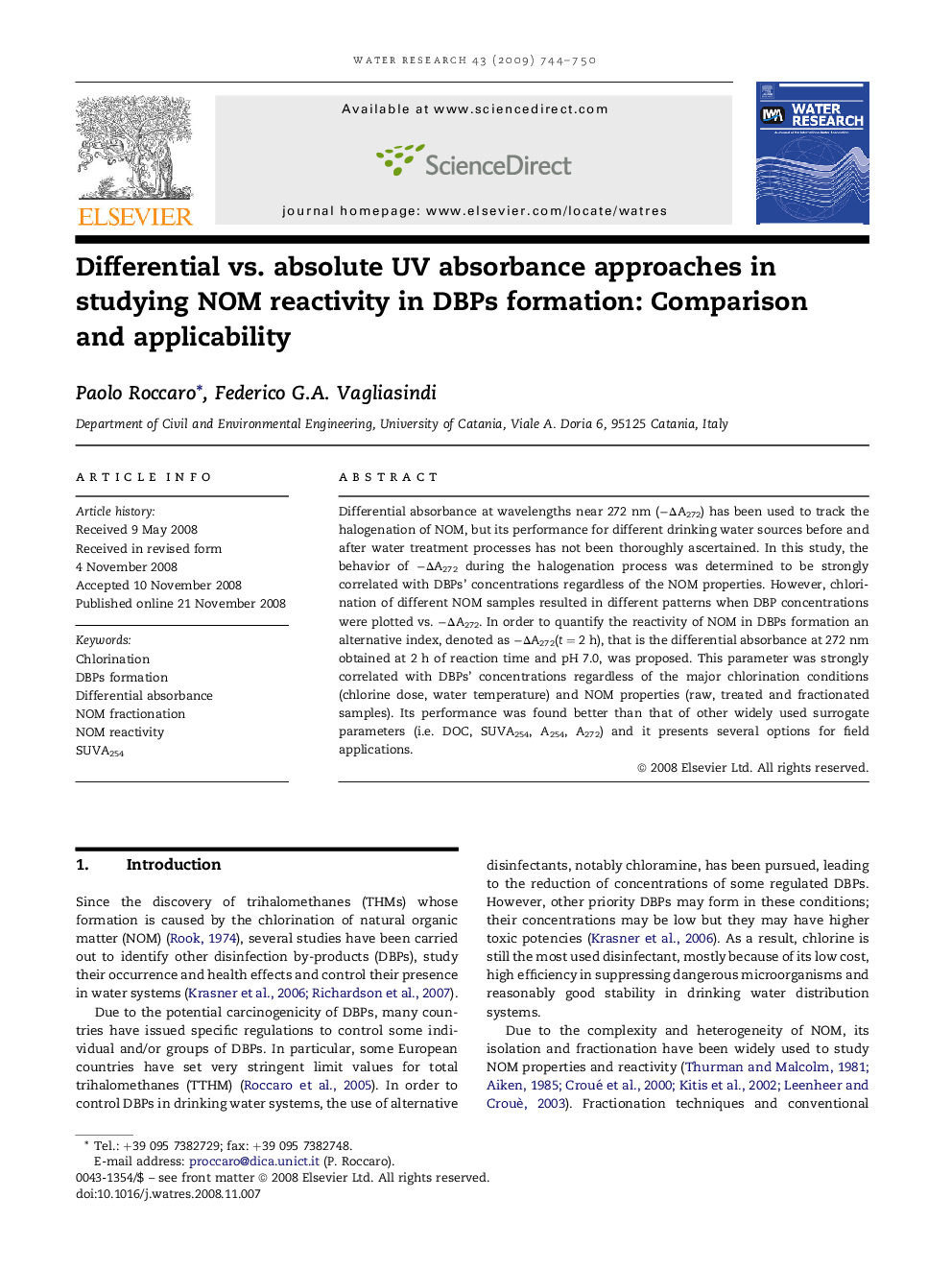| Article ID | Journal | Published Year | Pages | File Type |
|---|---|---|---|---|
| 4485291 | Water Research | 2009 | 7 Pages |
Differential absorbance at wavelengths near 272 nm (−ΔA272) has been used to track the halogenation of NOM, but its performance for different drinking water sources before and after water treatment processes has not been thoroughly ascertained. In this study, the behavior of −ΔA272 during the halogenation process was determined to be strongly correlated with DBPs' concentrations regardless of the NOM properties. However, chlorination of different NOM samples resulted in different patterns when DBP concentrations were plotted vs. −ΔA272. In order to quantify the reactivity of NOM in DBPs formation an alternative index, denoted as −ΔA272(t = 2 h), that is the differential absorbance at 272 nm obtained at 2 h of reaction time and pH 7.0, was proposed. This parameter was strongly correlated with DBPs' concentrations regardless of the major chlorination conditions (chlorine dose, water temperature) and NOM properties (raw, treated and fractionated samples). Its performance was found better than that of other widely used surrogate parameters (i.e. DOC, SUVA254, A254, A272) and it presents several options for field applications.
